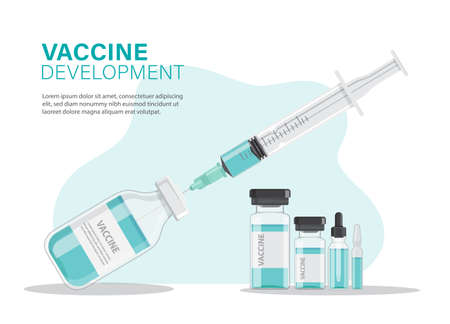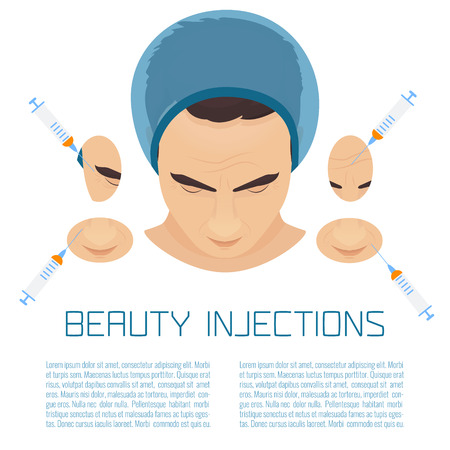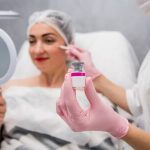1. The Origins of Botox: A Medical Breakthrough
Botox, now a household name in the world of cosmetic treatments, had its beginnings in the field of medicine. Its active ingredient, botulinum toxin, was initially discovered in the 19th century as a byproduct of bacteria known as Clostridium botulinum. Scientists soon realized that this toxin had powerful effects on the nervous system, leading to groundbreaking medical applications.
The Discovery of Botulinum Toxin
In the early 1800s, German scientist Dr. Justinus Kerner first identified botulinum toxin while studying cases of food poisoning. He hypothesized that the toxin could have therapeutic benefits if properly controlled. However, it wasn’t until the 20th century that researchers began exploring its medical potential.
Early Medical Applications
By the 1970s and 1980s, scientists started using botulinum toxin to treat various muscle and neurological disorders. Dr. Alan Scott, an ophthalmologist, pioneered its use for treating strabismus (crossed eyes). This discovery paved the way for additional medical uses.
Medical Conditions Treated with Early Botox Research
| Condition | Description |
|---|---|
| Strabismus | A condition where the eyes are misaligned, commonly known as crossed eyes. |
| Blepharospasm | An involuntary blinking or twitching of the eyelids. |
| Cervical Dystonia | A painful disorder causing neck muscles to contract uncontrollably. |
| Spasticity | A condition where muscles remain contracted due to nerve damage. |
The FDA Approval and Expansion of Uses
The success of botulinum toxin in treating muscle disorders led to its official approval by the U.S. Food and Drug Administration (FDA) in 1989 under the name “Botox.” Initially approved for medical conditions like strabismus and blepharospasm, researchers soon recognized its potential beyond neurology.
2. Botox Enters the Cosmetic Industry
Botox was originally developed for medical purposes, primarily to treat muscle disorders such as strabismus (crossed eyes) and blepharospasm (uncontrollable blinking). However, its journey into the cosmetic world began when doctors noticed an unexpected but welcome side effect—patients receiving Botox treatments experienced fewer wrinkles.
FDA Approval for Cosmetic Use
In 2002, the U.S. Food and Drug Administration (FDA) officially approved Botox for cosmetic use, specifically for reducing moderate to severe frown lines between the eyebrows, also known as glabellar lines. This approval marked a turning point, transforming Botox from a specialized medical treatment into a mainstream aesthetic procedure.
How Botox Became a Beauty Staple
Following FDA approval, Botox quickly gained popularity among celebrities and everyday individuals alike. Its ability to provide a youthful appearance without surgery made it an attractive option for those looking to reduce signs of aging. Over time, its applications expanded beyond frown lines to include crow’s feet, forehead wrinkles, and even non-cosmetic uses like excessive sweating and migraines.
The Growing Popularity of Botox Treatments
The widespread acceptance of Botox can be attributed to several factors:
- Minimal Downtime: Unlike surgical procedures, Botox requires no recovery time.
- Quick Results: Visible improvements appear within days and last for months.
- Non-Invasive: No incisions or anesthesia are required.
- Affordability: Compared to facelifts and other cosmetic surgeries, Botox is relatively cost-effective.
Medical vs. Cosmetic Uses of Botox
Though Botox is now widely recognized for its cosmetic benefits, it continues to be used in medical treatments. Below is a comparison of its medical and cosmetic applications:
| Category | Common Uses |
|---|---|
| Medical | Treatment for migraines, muscle spasms, excessive sweating (hyperhidrosis), overactive bladder |
| Cosmetic | Reduction of facial wrinkles (forehead lines, crow’s feet, frown lines) |
The Rise of Preventative Botox
A growing trend in recent years is the use of “preventative Botox,” where younger individuals opt for treatments before deep wrinkles form. This proactive approach has contributed to the continued rise in Botox’s popularity across different age groups.
As Botox became more accessible and socially accepted, it paved the way for advancements in non-surgical aesthetic treatments, setting the stage for what would become one of the most sought-after cosmetic procedures worldwide.

3. Cultural Impact and Celebrity Influence
Botox has become a household name in the United States, thanks in large part to its portrayal in media, pop culture, and celebrity endorsements. What was once a medical treatment for muscle disorders has now evolved into a widely accepted cosmetic procedure embraced by people from all walks of life.
The Role of Media and Pop Culture
Television shows, movies, and social media have played a crucial role in normalizing Botox. In the early 2000s, Botox was often depicted as a luxury reserved for Hollywood elites. However, as reality TV and beauty influencers began openly discussing their cosmetic treatments, public perception shifted.
Shows like The Real Housewives and Keeping Up with the Kardashians frequently featured Botox treatments, making it more relatable to everyday audiences. Social media platforms such as Instagram and TikTok further amplified this trend, with influencers sharing their Botox experiences openly.
Celebrity Endorsements and Their Influence
Many celebrities have publicly acknowledged using Botox, helping to remove stigma and encourage acceptance. When well-known figures admit to getting Botox, it reassures fans that the procedure is not only common but also effective and safe.
| Celebrity | Impact on Botox Popularity |
|---|---|
| Kim Kardashian | Brought Botox into mainstream conversations through reality TV and social media. |
| Jennifer Aniston | Openly discussed using Botox in moderation, promoting a natural look. |
| Chrissy Teigen | Used her platform to normalize cosmetic procedures by sharing her personal experiences. |
| Dolly Parton | Embraced Botox as part of her signature look, showing confidence in cosmetic enhancements. |
The Shift in Public Perception
With more exposure in pop culture and celebrity circles, the stigma around Botox has significantly decreased. It is no longer seen as something only for the rich and famous but rather as a routine self-care practice similar to skincare or hair treatments. Younger generations are particularly open to Botox as a preventative measure against wrinkles.
The Rise of “Preventative Botox”
A growing number of millennials and Gen Z individuals are turning to “preventative Botox,” aiming to slow down wrinkle formation before they appear. This trend has been widely discussed on social media, where users share their before-and-after results with millions of followers.
Conclusion: A Mainstream Beauty Staple
The cultural impact of Botox is undeniable. Through media representation, celebrity influence, and shifting beauty standards, Botox has transitioned from a niche medical treatment to an everyday cosmetic staple embraced by people across America.
4. Advancements in Botox Technology
Over the years, Botox has come a long way from its initial medical applications to becoming a staple in cosmetic treatments. Thanks to ongoing research and technological advancements, Botox formulations and application techniques have significantly improved, making treatments more effective and versatile.
New and Improved Botox Formulations
Recent innovations have led to the development of next-generation Botox products that offer longer-lasting results and faster onset times. Some new formulations are designed to provide a more natural look by allowing for softer muscle relaxation rather than complete freezing of facial expressions.
Advancements in Application Techniques
The way Botox is administered has also evolved. Today, practitioners use advanced injection techniques that enhance precision and minimize discomfort. These methods allow for targeted treatment, reducing the likelihood of unwanted side effects like drooping eyelids or unnatural stiffness.
Common Botox Injection Techniques
| Technique | Description |
|---|---|
| Micro-Botox | A technique using diluted Botox for subtle skin smoothing and pore reduction. |
| Baby Botox | A method involving smaller doses to maintain natural movement while reducing fine lines. |
| Botox Sprinkles | A scattered injection approach to create a softer, more youthful appearance. |
The Expanding Use of Botox Beyond Wrinkle Reduction
While Botox is widely known for its cosmetic benefits, it has also gained recognition for its therapeutic applications. Doctors now use Botox to treat a variety of medical conditions beyond wrinkle reduction.
Medical Uses of Botox
| Treatment Area | Description |
|---|---|
| Migraine Relief | Botox injections help reduce the frequency and severity of chronic migraines by relaxing muscles and blocking pain signals. |
| Excessive Sweating (Hyperhidrosis) | Treats excessive underarm, hand, or foot sweating by temporarily blocking nerve signals responsible for sweat production. |
| TMD & Jaw Pain | Eases jaw tension and relieves pain caused by temporomandibular joint disorder (TMD) by relaxing overactive muscles. |
| Muscle Spasms & Twitching | Treats involuntary muscle spasms in areas like the eyes (blepharospasm) or neck (cervical dystonia). |
The continuous advancements in Botox technology are making treatments safer, more effective, and increasingly diverse. Whether for aesthetic enhancement or medical relief, these innovations ensure that Botox remains one of the most sought-after non-surgical procedures available today.
5. The Future of Botox: Trends and Ethical Considerations
Emerging Trends in Botox Treatments
Botox has come a long way from its initial medical applications, and its future continues to evolve with new advancements. One of the biggest trends is the rise of “baby Botox,” which uses smaller doses to achieve a more natural look. Additionally, preventative Botox is becoming increasingly popular among younger individuals who want to delay the signs of aging before they even appear.
Another growing trend is the use of Botox beyond traditional wrinkle reduction. Researchers are exploring its potential in skin rejuvenation, pore reduction, and even improving skin texture. The idea is that Botox can do more than just smooth lines—it may help maintain overall skin quality over time.
Shifting Public Perception
The way people view Botox is also changing. In the past, it was often associated with celebrities or those seeking a “frozen” look. Today, it has become much more mainstream, with many viewing it as just another form of self-care. Social media has played a big role in this shift, with influencers and everyday individuals openly sharing their Botox experiences.
However, there is still some stigma attached to cosmetic procedures. While acceptance is growing, some people worry about looking unnatural or facing judgment for using injectables. As attitudes continue to evolve, transparency and education will be key in normalizing Botox as a personal choice rather than a taboo subject.
Ethical Concerns: Overuse and Beauty Standards
While Botox offers many benefits, ethical concerns remain regarding its widespread use and the pressure to conform to unrealistic beauty standards. Some worry that excessive use of Botox can lead to an unnatural appearance or even body dysmorphia, where individuals continuously seek treatments without needing them.
The influence of social media filters and celebrity culture has also contributed to rising expectations for perfection. This has led some experts to question whether the increasing demand for injectables is driven by personal preference or societal pressure.
The Ethical Debate: Balancing Benefits and Risks
| Pros of Widespread Botox Use | Cons of Widespread Botox Use |
|---|---|
| – Boosts confidence and self-esteem | – Can create unrealistic beauty standards |
| – Offers non-invasive anti-aging solutions | – Risk of overuse leading to unnatural results |
| – Expands medical applications beyond aesthetics | – Pressure on younger generations to start early |
| – Increasing accessibility and affordability | – Ethical concerns about unnecessary procedures |
The Future: Striking a Healthy Balance
The future of Botox lies in finding the right balance between enhancement and authenticity. Experts emphasize the importance of responsible use—ensuring patients receive treatments for the right reasons rather than external pressures. Education about realistic expectations and ethical considerations will play a crucial role in how society continues to embrace Botox in the years ahead.


